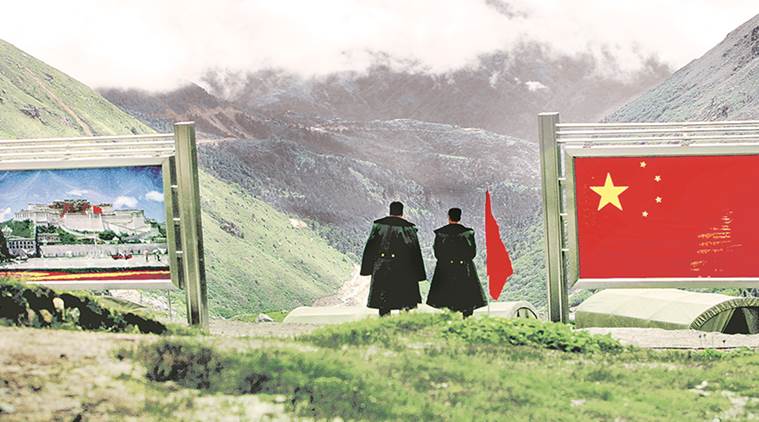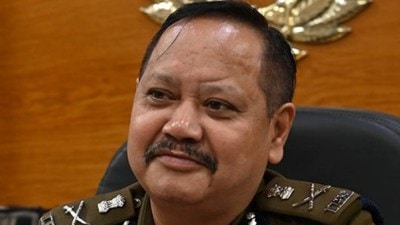Two years after the Doklam stand-off, China Wednesday outlined its roadmap to “promote stability” and resolve tensions along the border with India.
A white paper titled ‘China’s National Defence in the New Era’, released by the State Council Information Office, said about China’s armed forces: “They strive to promote stability and security along the border with India, and take effective measures to create favorable conditions for the peaceful resolution of the Donglang (Doklam) standoff.”

Elaborating on the measures, it said: “To implement the important consensus reached by the leaders of China and India, the two militaries have exchanged high-level visits and pushed for a hotline for border defense cooperation and mechanisms for border management and border defense exchanges.”
Story continues below this ad
Read | Staggered patrols, meetings, new drills lower Sino-Indian border tensions
The Doklam stand-off started in June 2017 and was resolved in August-end that year, just days before the BRICS summit in Xiamen in September 2017. It cast a shadow on bilateral relations, which was reset with the informal summit between Prime Minister Narendra Modi and Chinese President Xi Jinping in Wuhan in April 2018.
Since then, the relationship on the border has been relatively calm, as both leaders gave “strategic guidance” to their militaries to maintain peace and tranquility along the Line of Actual Control. The LAC has been largely peaceful, with some stray incidents in recent months.
According to Indian government sources, the new rules of engagement between the two sides have meant that face-offs between soldiers on both sides of the disputed boundary have reduced significantly. They include changes in drills and procedures of patrolling by the two sides and control of aggressive behaviour, besides increased number of meetings between the local commanders, sources said.
Story continues below this ad
The Chinese President is likely to visit India in October this year for the second informal summit, with Varanasi being the likely venue.
Indian government sources, who analysed the white paper, said it also tries to play down heavy military expenditure, saying that China is spending less on defence budgets in terms of GDP in comparison to India, US and other countries.
Also Read | Congress raises China transgression, Rajnath Singh says borders secure
According to the Stockholm International Peace Research Institute (SIPRI), the leading international defence think tank, China, the second-largest spender of defence in the world, increased its military expenditure by 5.0 per cent to $250 billion in 2018 against India’s $66.5 billion. The US, which is the largest spender of defence, spent $649 billion in 2018.
Story continues below this ad
Arguing that China’s defence expenditure is reasonable and appropriate, the white paper stated that the country attends to both development and security.
“It is making an integrated effort to build a prosperous country and a strong military, and striving for the coordinated development of national defence and the economy,” it said, while adding that China’s defence expenditure is open and transparent.
In the white paper, China made the case that as a percentage of GDP, from 2012 to 2017, its average defence expenditure was about 1.3 per cent as compared to 3.5 per cent in the US, 4.4 per cent in Russia, 2.5 per cent in India, 2 per cent in the UK among other countries.
“As the only major country yet to be completely reunified, and one of the countries with the most complex peripheral security environment, China faces serious challenges in safeguarding national sovereignty, territorial integrity, and maritime rights and interests. China is moving closer to the center of the world stage, and the international community expects more international public security goods from the Chinese military,” it stated.
Story continues below this ad
The white paper also referred to a “crack down on proponents of separatist movements”.
Among the fundamental goals of China’s national defence in the new era, it states, are to “oppose and contain “Taiwan independence”; “crack down on proponents of separatist movements such as Tibet independence” and the creation of “East Turkistan”; “to safeguard national sovereignty, unity, territorial integrity and security” and “safeguard China’s overseas interests”.
It also said that major countries around the world are “readjusting their security and military strategies” and countries like UK, France, Germany, Japan and India are “rebalancing and optimizing the structure of their military forces”.
Chinese news agency Xinhua said it was the 10th white paper on national defense the Chinese government has issued since 1998 and the first comprehensive one since the 18th National Congress of the Communist Party of China in 2012.

 The Doklam stand-off started in June 2017 and was resolved in August-end that year, just days before the BRICS summit in Xiamen in September 2017.
The Doklam stand-off started in June 2017 and was resolved in August-end that year, just days before the BRICS summit in Xiamen in September 2017.






